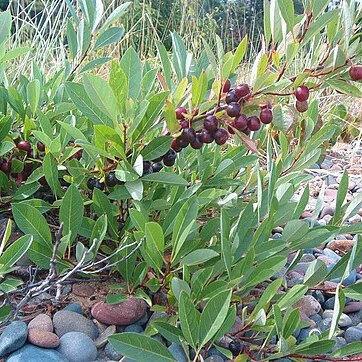It is a low growing shrub. It grows 75 cm high and spreads 75 cm wide. The leaves are grey-green. They are 35 mm long. There are teeth near the tips. The leaves have a blue tint underneath. The flowers are white and in clusters. The fruit is black or dark red. They can be sweet or acid.

